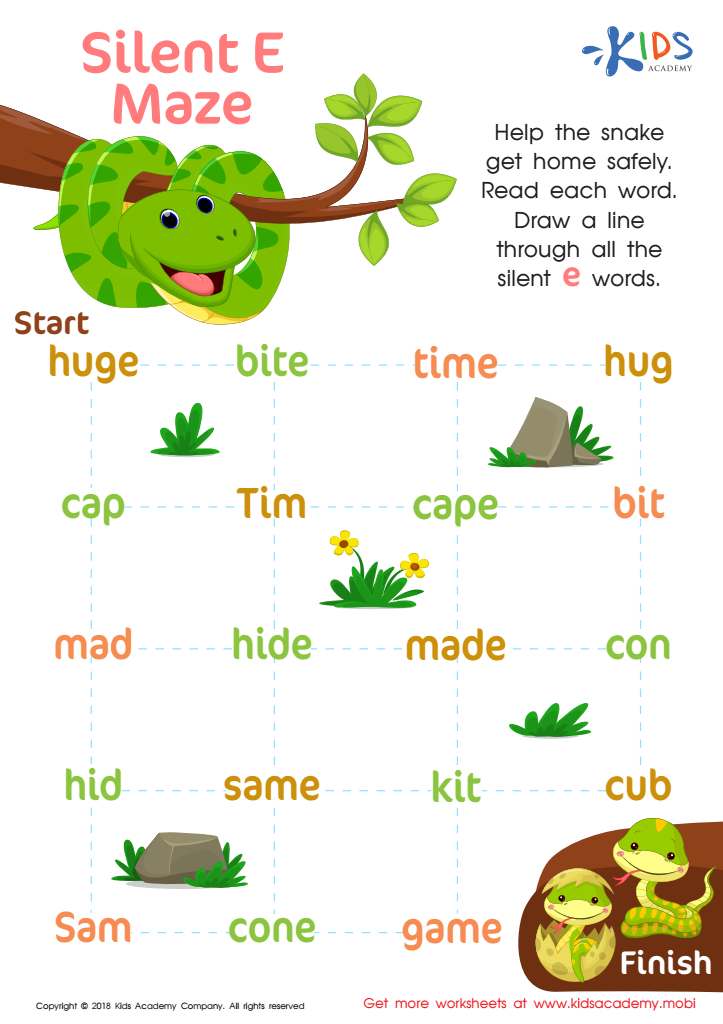Normal Silent Vowels Worksheets for Ages 5-8
5 filtered results
-
From - To
Discover engaging Normal Silent Vowels Worksheets designed for children aged 5-8, aimed at enhancing early literacy skills. These worksheets introduce young learners to the concept of silent vowels, featuring fun activities that promote understanding and recognition. With colorful illustrations and interactive exercises, children will be motivated to practice their reading and phonics. Ideal for classrooms or home learning, these worksheets provide a solid foundation for identifying silent vowels in words, helping kids develop crucial reading skills while having fun. Explore our comprehensive collection of worksheets that make learning enjoyable and effective for your little ones today!


Silent Letter Maze Worksheet


Is It Silent? Worksheet


Silent E Maze Worksheet


Silent E Sentences Worksheet


Silent E Words Worksheet
Normal silent vowels are vital in early childhood literacy for children aged 5-8. Understanding these vowels helps children recognize the complexities of spelling and pronunciation, which are often not intuitive. For instance, words like "kite" or "time" feature silent vowels that can confuse young learners who are just beginning to read. Teachers and parents should emphasize these because mastering silent vowels aids phonemic awareness, a foundational skill for reading fluency and comprehension.
Furthermore, familiarity with silent vowels enriches vocabulary and enhances writing skills. As children encounter more advanced texts, recognizing patterns in silent vowels allows them to decode and spell words more accurately, making reading a more enjoyable experience. Additionally, knowing the basic rules surrounding silent vowels fosters a sense of achievement, improving confidence in their reading abilities.
Engaging children in fun activities focused on silent vowels, such as interactive games or storytelling, can make learning enjoyable while reinforcing their understanding. By prioritizing these early lessons on silent vowels, educators and parents set the stage for lifelong literacy skills, allowing children to navigate the reading and writing landscape with greater ease and confidence. This foundational understanding paves the way for their future success in school and beyond.

 Assign to My Students
Assign to My Students















